By Maurizio Di Paolo Emilio, contributing writer
Power management is a challenging element in many areas of electronic design, not just in the industrial one. By managing the problems of efficiency and thermal management in the best way, it allows obtaining devices with very low energy consumption. There are several characteristics to consider for obtaining an efficient DC/DC conversion. Each of these methods has its specific advantages and disadvantages, depending on a series of operating conditions.
Introduction
The design of DC/DC converters follows some specifications that must be approved according to the application field. Examples of such specifications are the input voltage range, output voltage values, output power, efficiency, electrical insulation between input and output, and industrial standards. In the design of DC/DC converters, many factors contribute to determining the correct values of the relative components. Moreover, the choice of the best switching technique that underlies the operation of DC/DC converters must be considered to further optimize the efficiency of the converters. The technology used (IC), the material, the dimensions, and compliance with the regulations are a dominant part of the final cost.
The design of the power supply stage requires the identification of some characteristics such as the transient tolerance and the load characteristic (impedance range). The transient response is a good indicator of the performance level of a power supply. It is a measure of how well a direct current can withstand changes in load impedance.
Evaluation of the DC/DC converter efficiency
System losses play a fundamental role in evaluating the efficiency of a DC/DC converter. Two types involve their analysis: those due to the peak current in the inductor and so-called switching losses consequent to the charge and discharge phases of the converter circuit. Concerning losses due to the peak current in the inductor, two elements can be identified, one relating to the drain-source resistance of the ON-OFF switching FET during conduction, the other concerning the DC resistance of the inductor. The switching losses, or dynamics, are primarily caused by the capacitive effects of the circuit. In particular, the drain-source parasitic switching capacities of the FET and the diode must be considered.
Energy losses in the core of the inductor are directly proportional to the switching frequency; in fact, an increase in frequency follows an increase in losses in the inductor core. This type of leak is due to the material and the size of the core. The optimal choice of the inductor consists mainly of three aspects to consider: the saturation current, which must be sufficiently higher than the maximum current flowing in the inductor; the continuous resistance of the inductor; and the physical size of the inductor. The FET must be able to withstand the drain-source voltage during the discharge of the inductor. Also, the maximum drain current must be higher than the peak current passing through the inductor. For the minimization of switching losses, the FET must have low gate-source and drain-source capacitance values.
Digital control
The digital control has proven to be the most reliable method for voltage adjustments. The digital ICs allow fine-tuning the energy savings up to the control of the dissipation during each operating cycle of the switching power supply. In the digital controller, an analog-to-digital converter (ADC) transforms the difference between the measurement (scale) of the output voltage and the reference voltage (error voltage) in a digital value. The PID processor of the digital controller replaces the compensating network of the analog device. The Renesas ZL6105, as an example, is a digital power regulator with integrated MOSFET drivers. It is designed to be a flexible element for direct current and can be easily adapted to the design that goes from a single-phase power supply operating from a 3.3-V input to a multi-phase power supply that operates from a 12-V input (Fig. 1 and Fig. 2 ).
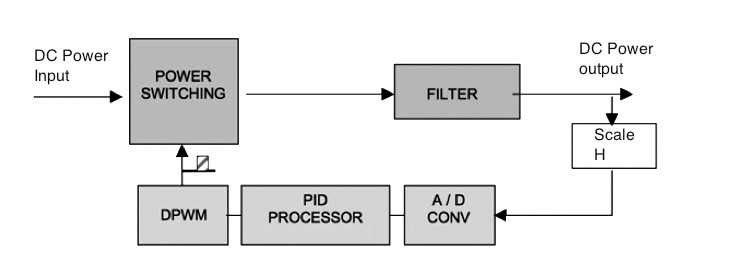
Fig. 1: Power management digital control.
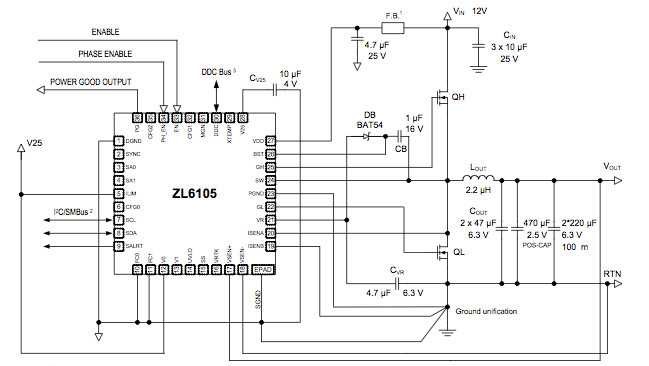
Fig. 2: Typical application circuit of the ZL6105.
Medical
Medical-grade DC/DC converters are a description often used for a class of increasingly popular converters. The primary requirement is the search for a safe galvanic separation between the input and the output, usually expressed as an isolation voltage. The ability of an isolated converter to withstand high voltages through its isolation barrier depends on the materials used to build the converter, the physical separation between the input and output traces on the internal PCB, and the transformer’s insulation capacity to withstand stress electric between the inlet and outlet windings. The simplest solution for transformer construction is to use windings with a coating thickness or with multiple coatings to ensure adequate insulation. However, as the trend toward miniaturization progresses, this solution is reaching its limits.
In addition to insulation resistance, the other most critical specification for DC/DC converters is the operating temperature range. An efficient converter with low internal power dissipation can operate at high temperatures without overheating.
One example is the REM1 from RECOM that integrates the REM3, REM6, and REM10 series, offering a 1-W grade non-regulated DC/DC converter in a more compact SIP7 package. The REM1 has a 5.2-kVAC /1-minute isolation and a 2-MOPP/250-VAC operating voltage. The REM1 is available with 3.3-, 5-, 12-, 15-, or 24-V inputs and offers 3.3-, 5-, or 12-V outputs with up to 85% efficiency (Fig. 3 ).
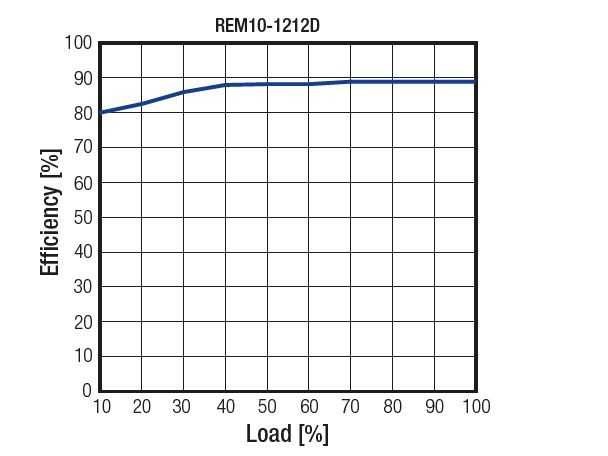
Fig. 3: DC/DC converter efficiency according to the load for the REM10 series.
ADI’s μModule Power by Linear series represents complete “system in a package” power solutions that minimize design time and solve the most common problems in terms of board space, heat dissipation, and energy density. The μModule products are complete solutions for power management with DC/DC controllers, power transistors, input and output capacitors, compensation components, and inductors, integrated into compact BGA or LGA surface-mount packages (Fig. 4 ).
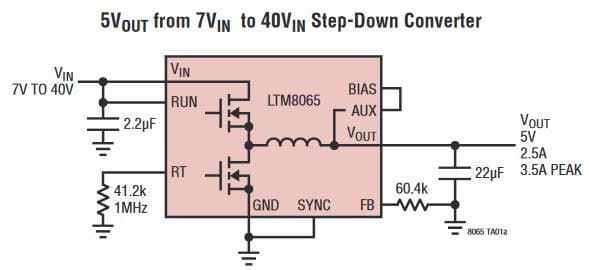
Fig. 4: Typical application circuit of LTM8065.
Railway
Railway applications require equipment to withstand the climatic, mechanical, and electrical environments encountered on traction vehicles and rolling stock. Electronic equipment requires the conversion of the DC/DC power supply and must operate safely and reliably.
The converters of RECOM’s RP series — RP08-AW, RP20-FR, and RP40-FR — have an efficiency up to 92% and have been designed to be used in railway board train applications (rolling stock), which can also be used in other applications in the telecommunications field. The compact modules offer a wide input voltage range, with single- and dual-output voltages and control logic through some corresponding pins. The yield of 89% and the wide working temperature range from −40°C to 85°C in the -HC version offer a wide range of uses, considering that, in turn, the cooling exploits the natural convention but with the possibility of using pre-assembled heat sinks (Fig. 5 ).
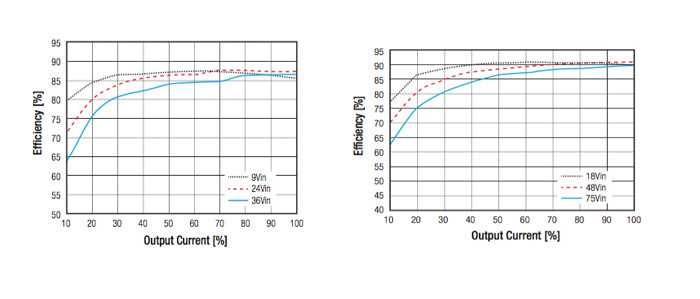
Fig. 5: Efficiency as a function of the output current for the RP20 (left) and RP40 (right) series.
Conclusion
The design of power systems involves a series of compromises between design factors, such as size, cost, and efficiency. In general, to design the power supply stage, it is necessary to identify some performance, such as transient tolerance, ripple voltage, and load characteristics. To realize the system with a greater run time and reduced dimensions, more and more system designers are concentrating on improving the efficiency of power conversion with advanced circuit topologies through better management of the battery characteristics.
This article was originally published on Power Electronics News .
Advertisement
Learn more about Analog DevicesElectronic Products MagazineInc.Recom PowerRenesas Electronics America





